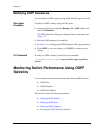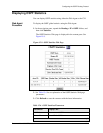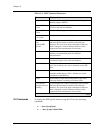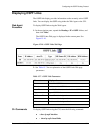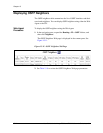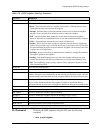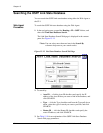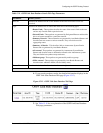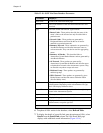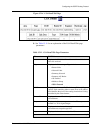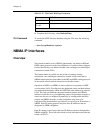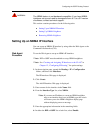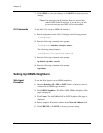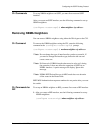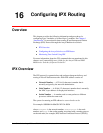
15-26 User Guide for the Avaya P580 and P882 Multiservice Switches, v6.1
Chapter 15
6. To update all LSA entries in the database, select Refresh Table.
7. To display the details of a specific link state advertisement (LSA), select
Details from the Detail Link column The LSA Detail Web page
displays with additional search information (Figure 15-14).
Table 15-10. OSPF Link State Database Parameters
Parameter Displays...
Detail Link A link to the LSA Detail Web page.
Area ID The 32-bit identifier of the area from which the LSA was
received.
Type The LSA format and function. Types include:
• Router Links - These packets describe the states of the
router’s links to the area and are only flooded within a
particular area.
• Network Links - These packets are generated by
Designated Routers and describe the set of routers
attached to a particular network.
• Summary Network - These summaries are generated by
Area Border Routers and describe inter-area routes to
various networks. They can also be used for aggregating
routes.
• Summary AS Border - This describes links to
Autonomous System Border Routers and are generated by
Area Border Routers.
• AS External - These packets are generated by
Autonomous System Border Routers and describe routes
to destinations external to the Autonomous system. They
are flooded everywhere except stub areas.
• Multicast Group - These packets are generated by
multicast groups.
• NSSA External - These packets are generated by Area
Border Routers and describe routes within the NSSA
(Not-So-Stubby-Area).
LS ID The piece of routing domain that is being described by the
advertisement. Depending on the advertisements LS type,
the LS ID displays different values.
Router ID The 32-bit number that uniquely identifies the originating
router in the Autonomous System.
Sequence The sequence number.
Age Displays the age (in seconds) of the LSA.
Checksum Displays the checksum of the complete contents of the
advertisement, except the age field.



